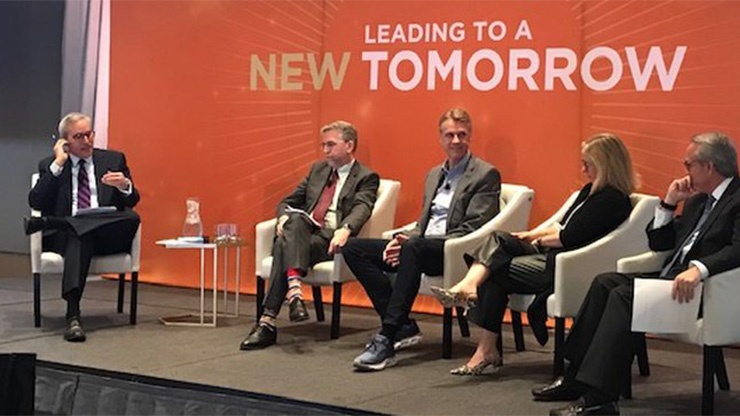What 5 retail industry leaders are saying about coronavirus

PUBLISHED : March 13, 2020

It is not exactly clear what the depth of the fallout from COVID-19 will entail for the retail sector.
Last week’s American Apparel & Footwear Association’s annual Executive Summit conference was significant in a number of ways, particularly because it was held immediately prior to organizations canceling or rescheduling major events across industries.
The novel coronavirus, an illness caused by SARS-CoV-2, was top of mind both on panel discussions and in informal conversations among industry leaders in between sessions. Early in the conference, the audience was polled on what feels like the biggest threat to their businesses right now and coronavirus received the most votes, followed by counterfeits.
With news regarding the pandemic rapidly changing, retail is responding in a myriad of ways. Target wrote an open letter to customers stating that the company will be making cleaning routines “even more rigorous,” in addition to stopping food sampling in stores and preventing the stockpiling of key supplies. Similarly, Walmart revealed plans for third-party sanitation in stores impacted by the pandemic and rolled out an emergency leave policy for its associates where the mass merchant will waive its attendance policy through the end of April.
But, retailers are already feeling the impact of the outbreak. A Morgan Stanley note this week stated that total retail traffic fell by 9.1% last week, while apparel retail traffic fell 3.9% and luxury retail traffic declined by 14.7%. While some research has suggested that reduced mall foot traffic may push sales online, neither Morgan Stanley nor Wedbush analysts believe that e-commerce will balance out losses in sales.
Here are what five retail leaders have to say regarding the coronavirus, and issues surrounding its possible impact, including what it has to do with tariffs, sustainable practices and internal communication with suppliers.
Colin Browne, COO, Under Armour
“A lot of this has been happening with our Asia teams that are actually sitting at home … That adds an additional level of complexity.
And some of the factories do not have all their people back. There’s just so many moving pieces. So a lot of it is just trying to set it, from my point of view. And I’ve spoken to all of our strategic members over the past couple of months and continue to kind of trade messages with them every day. I’m really just trying to be supportive. Not put too much pressure on them, to be frank with you. Because we also need to be considerate of the challenges that they are going through.”
Steve Lamar, President and CEO, AAFA
“One of the facts that’s very clear from the CDC is that you don’t get coronavirus from inanimate objects like products, materials or packaging that ship through cargo. We try to make sure people understand that because as production begins to move, you know, you don’t want somebody being afraid that they’re going to be contracting it from something that it can’t be contracted from.”
Morten Lehmann, Chief Sustainability Officer, Global Fashion Agenda
“I think one of the challenges is that gap in perception. We see this is coming, we see that we will have a world with resource constraint, but we are not acting. … And now, all of a sudden, we are facing it right now, here. … We’re thinking in the short term. So, hopefully this will inspire people to say, ‘How do we navigate this process? How do we think and consider how we can do things differently?'”
Amina Razvi, Executive Director, Sustainable Apparel Coalition
“In times like this, I think it’s easy to be like, ‘Well, we have a bigger issue to solve for, and so we’re not going to talk about or address sustainability or figure out how to make it work.’
In this case, I would actually hope this is the complete opposite. Like I would really hope that people look at this and say, ‘It is actually fundamentally, critically important for us to understand our supply chain just as well as we understand the business.’ … This highlights, I think, the need to do that. But I also think, and I know from working in a big company, that sometimes these moments are like, ‘No, no, we can’t take on another thing.’ And yet it’s actually the best time to figure out how to do this, so that you are looking at how you future-proof your business.”
Gary Simmons, Director, Intradeco Apparel
“I think the key thing here is communication. It’s truly saying, ‘Look, we don’t know yet.’
I read a couple of articles just this morning that said, the best thing to say is you just don’t know yet. That doesn’t mean you won’t tell people what’s going to happen. But as soon as it gets clear what’s going on, then you’ll communicate.”
News link : retaildive.com



Leave a comment